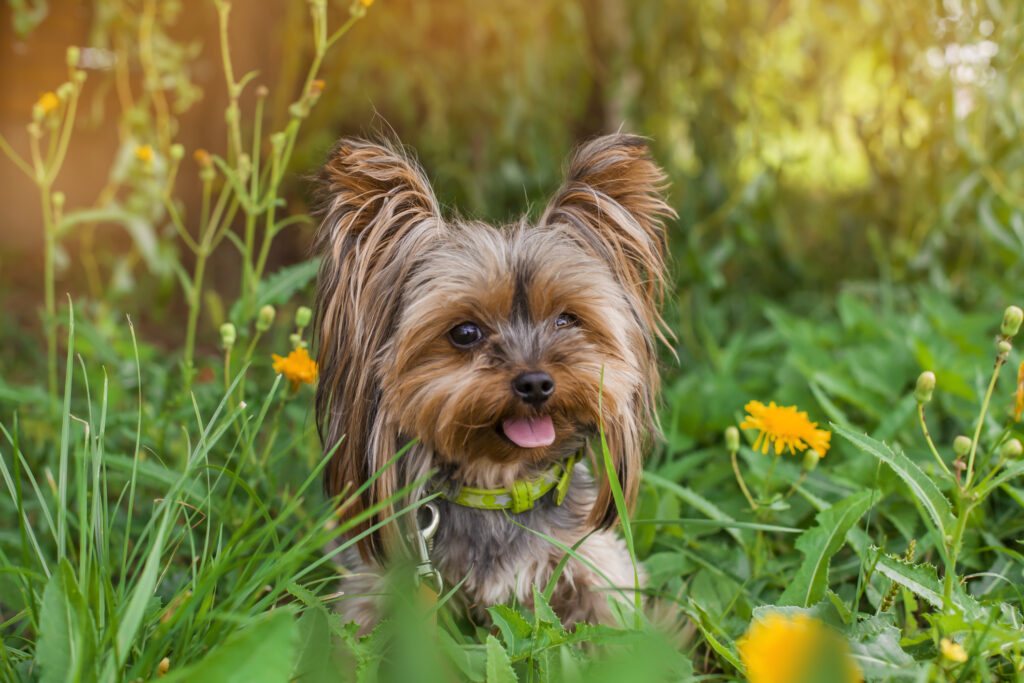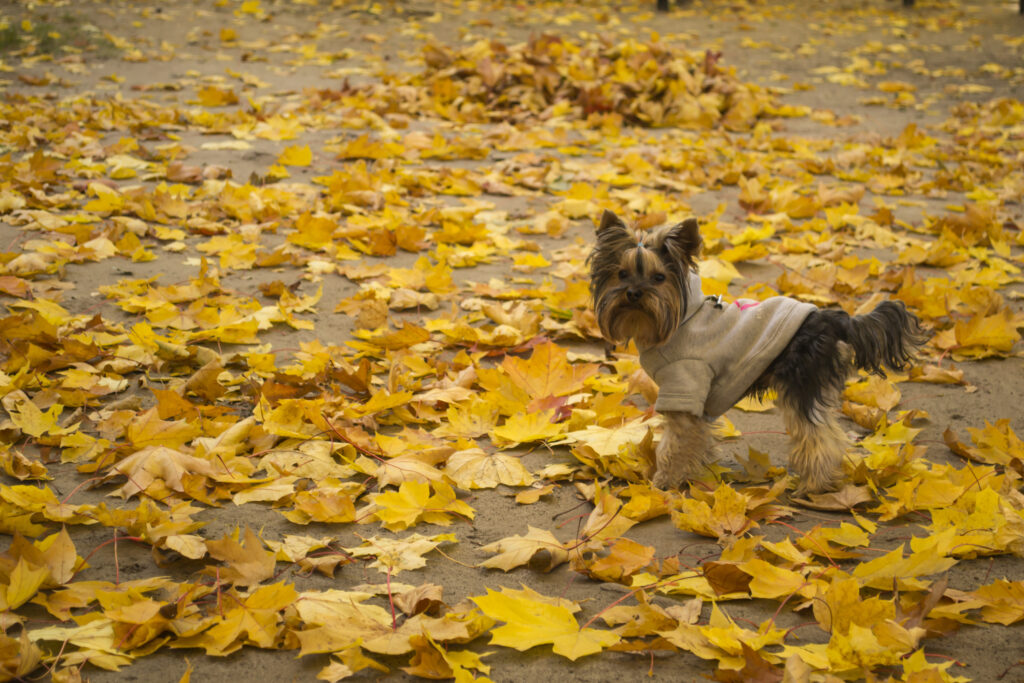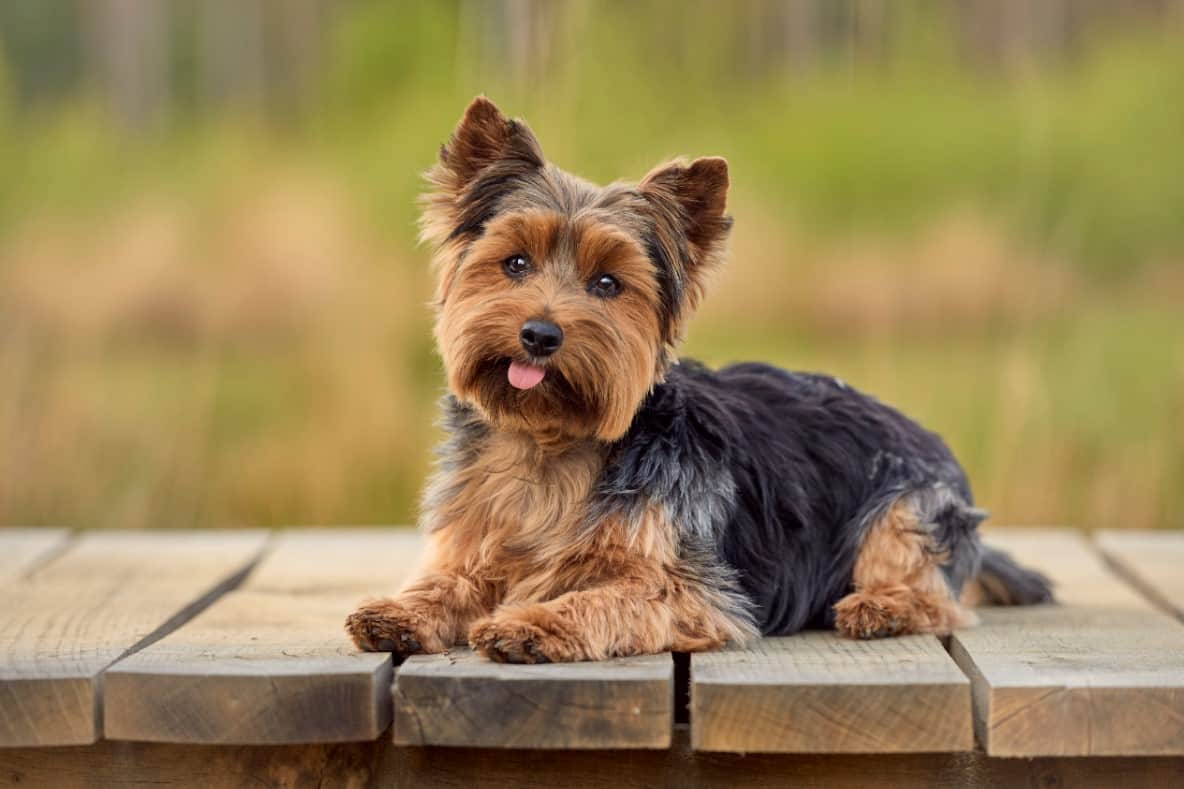The Yorkshire Terrier – also known as the Yorkie – is a small dog breed that originates from Yorkshire, England. Although it has the word ‘terrier’ in its name, the Yorkie is actually categorized at a toy breed by the AKC. Despite their diminutive size, they are very protective, curious, courageous, and do not display the temperament of a lapdog. Yorkshire Terriers were originally bred to be working dogs to chase and kill rodents.
With long hair that can touch the ground, Yorkies are very recognizable and one of the most popular small dog breeds.
In this article, we will study the history of this small yet brave breed, look at their distinctive characteristics, and answer some frequently asked questions about Yorkies.
Yorkshire Terrier breed characteristics
- Yorkies tend to be very protective of their territory and owners. This makes them great watchdogs as they bark a lot, but not an effective protection dog due to their small size. If the barking becomes a problem, it can be redirected and resolved with proper training.
- The Yorkshire Terrier is a small breed weighing between 4 to 8 pounds with an average height of 8 to 9 inches.
- Yorkies can suffer from separation anxiety and feel extreme discomfort when left alone or separated from their owners. For this reason, some owners of the breed have two Yorkies so they can provide each other with some company.
- Yorkshire Terriers have hair, not fur. Their hair enables their coat to grow to a long length – however, they aren’t able to grow long hair until the adult coat is grown. It can take 18-24 months for the hair of a Yorkie to touch the ground.
- Yorkies have a sensitive digestive system, and straying outside of the regular diet can result in vomiting or diarrhea. It is best to know which foods are safe before letting them have a taste.
- The coat of a Yorkshire Terrier doesn’t shed like many other dogs – because they don’t have an undercoat, they shed no more than humans.

History of the Yorkshire Terrier
As the name suggests, Yorkshire Terriers originate from Yorkshire, England. In the mid-1800s, there was a wave of workers from Scotland coming to Yorkshire, and they brought a variety of terrier breeds with them. The workers in Yorkshire wanted to breed a working terrier to help them to catch vermin in the mines.
To achieve their desired working terrier, the workers bred Black and Tan Terriers with Clydesdale Terriers and Paisley Terriers. Some specialists believe that in addition to these breeds, the Maltese was also used to breed the first Yorkshire Terriers. It has also been suggested that they were originally bred with Scotch Terriers, but the breed was named Yorkshire Terrier because much of the development of the breed was carried out in Yorkshire.
In the early days, the definition of the breed was quite loose. Any dog with the shape of a terrier, a silver head and legs, blue on its body, a docked tail, trimmed ears, and a long coat was defined as a Yorkshire Terrier. This all changed in the 1860s when a Paisley-type Yorkie dog named Huddersfield Ben owned by a local Yorkshireman was seen at dog shows throughout England and set the breed standard for the Yorkshire Terrier. To this day, Huddersfield Ben is referred to as the father of modern Yorkies.
The breed became very popular during the Victorian era, and it was hard not to see one at dog shows. Yorkshire Terriers became part of royalty, and owning a small dog was a popular trend at the time – and in particular, owning a Yorkie became a symbol of wealth.

Coming to the United States
The first Yorkies arrived in the United States in 1872, and as Americans increasingly embraced Victorian customs, the breed became popular in the country shortly after. The first Yorkie was recognized by the American Kennel Club in 1885. After the Victorian era concluded, the popularity of Yorkies fell. In the 1940s, the number of small breeds registered with the AKC also dipped, resulting in fewer Yorkshire Terriers in the United States.
Yorkies are currently the 12th most popular dog breed in the United States according to the AKC’s latest ranking. Although originally bred to be a working dog to chase and kill vermin, they are now mostly used as companion dogs. Yorkshire Terriers are determined dogs that are energetic, brave and playful. Yorkies also make perfect companions if you’re allergic to dogs as they are hypoallergenic.
Like many small breeds, Yorkies adapt well to living in apartments but might not be a good choice for people with small children. The same also applies if you are a family that already has a large dog, because Yorkies are very territorial, show little tolerance to other animals, and will try to challenge them. These behavior problems can be tapered off with the right training.

Frequently Asked Questions About Yorkshire Terriers
What is the lifespan of a Yorkshire Terrier?
The average lifespan of a Yorkshire Terrier is between 14 and 16 years – longer than many other breeds. The breed mostly suffers from diseases like bronchitis, cataracts, lymphangiectasia, keratitis sicca, and portosystemic shunt. Regular vet visits help to prevent these common diseases, extending the lifespan.
How do you groom a Yorkshire Terrier?
Yorkies don’t have an undercoat, so their hair is very similar to humans. The best way to groom a Yorkie is by brushing often. Due to their long hair, small knots tend to form. Try to untie the knots using your fingers, but if the knot is particularly stubborn, using a comb can help. Use dog trimmers to trim the hair. Comb out the fur around the ears, face, and paws, and cut the excess hair in these areas.
How many puppies can a Yorkie have?
The average litter size for Yorkies is between two and five. If the litter is bigger than five, there is a high chance that some puppies will be stillborn or die soon after birth.
Are Yorkies hypoallergenic?
Although no dog breed is completely hypoallergenic, Yorkies are considered a hypoallergenic breed. Yorkies don’t have an undercoat beneath the human-like hair they have. They do not shed seasonally (or at any time during the year, for that matter), being a preferred breed for people with allergies.
How long do Yorkies stay in heat?
Yorkies generally go into heat every five to eight months, each heat cycle lasting two to four weeks. Like all dogs, Yorkies show behavioral changes in heat. The most common symptoms include frequent urination, higher alertness, nervousness, and getting distracted more easily.
Read more in this series:
- About The Breed: Basset Hound
- About The Breed: Beagle
- About The Breed: Bloodhound
- About The Breed: Bulldog
- About The Breed: Chihuahua
- About The Breed: Dachshund
- About The Breed: German Shepherd
- About The Breed: Greyhound
- About The Breed: Golden Retriever
- About The Breed: Labrador Retriever
- About The Breed: Pembroke Welsh Corgi
- About The Breed: Pomeranian
- About The Breed: Pug
- About The Breed: Siberian Husky


You must be logged in to post a comment.